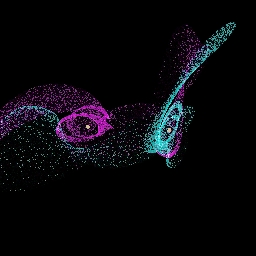| Kuiper Belt: Background | ||
|
In the 1700's, Immanuel Kant and the Marquis de Laplace proposed that the solar system collapsed from a gaseous medium of roughly uniform density. A flattened gaseous disk, which became known as the protosolar nebula, formed out of this cloud. The Sun contracted out of material at the center of the disk; the planets condensed in the outer portions. In the 1950's, Jan Oort hypothesized a vast cloud of comets surrounding the Sun at a distance of 50,000 AU. At about the same time, Edgeworth and Kuiper independently proposed that smaller disk-shaped clouds of comets might orbit the Sun just beyond the orbit of Neptune, which orbits the Sun at a distance of roughly 30 AU .
Both theories tried to explain different classes (families) of cometary
orbits around the Sun, with long-period comets originating in the
Oort cloud and short-period comets originating in the
Edgeworth-Kuiper Belt. As computer caclulations of comet
orbits became more sophisticated in the 1970's and 1980's, both of
these theories became more broadly accepted.
| ||




